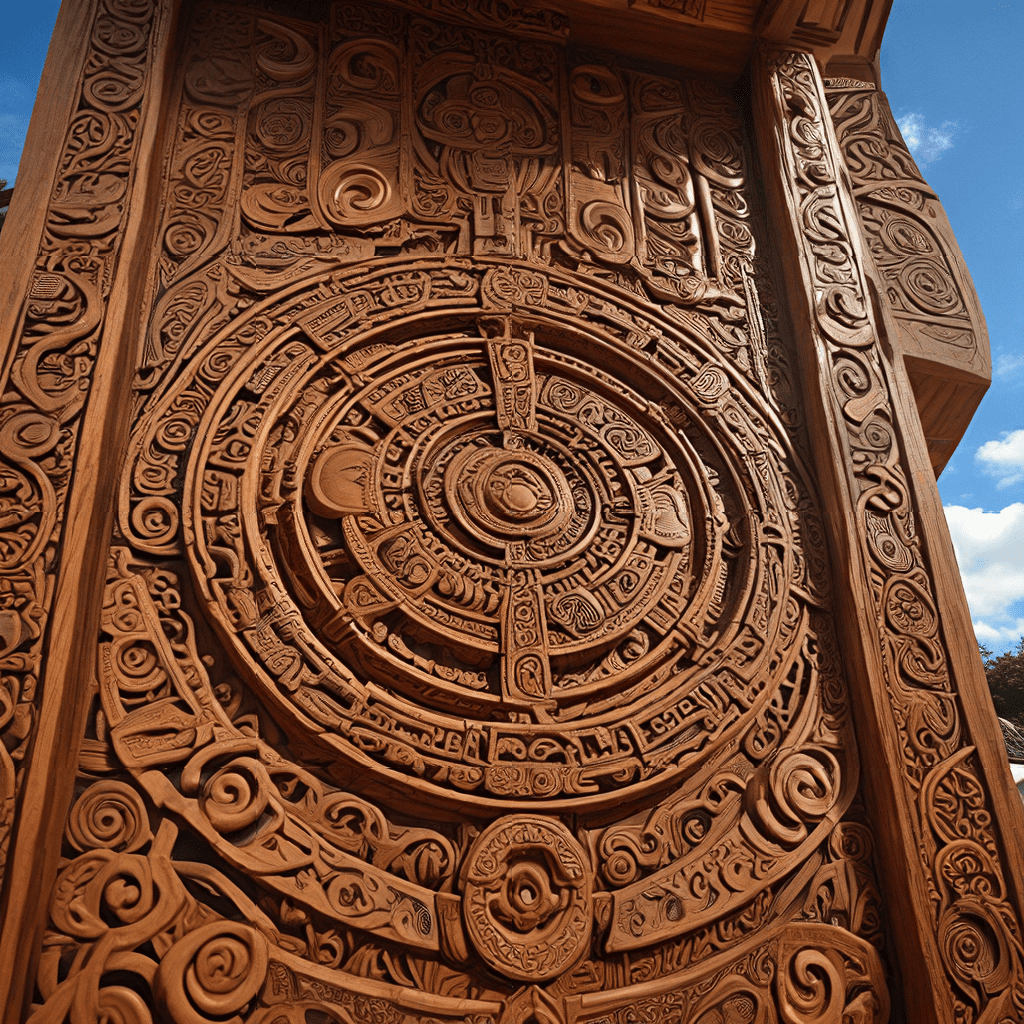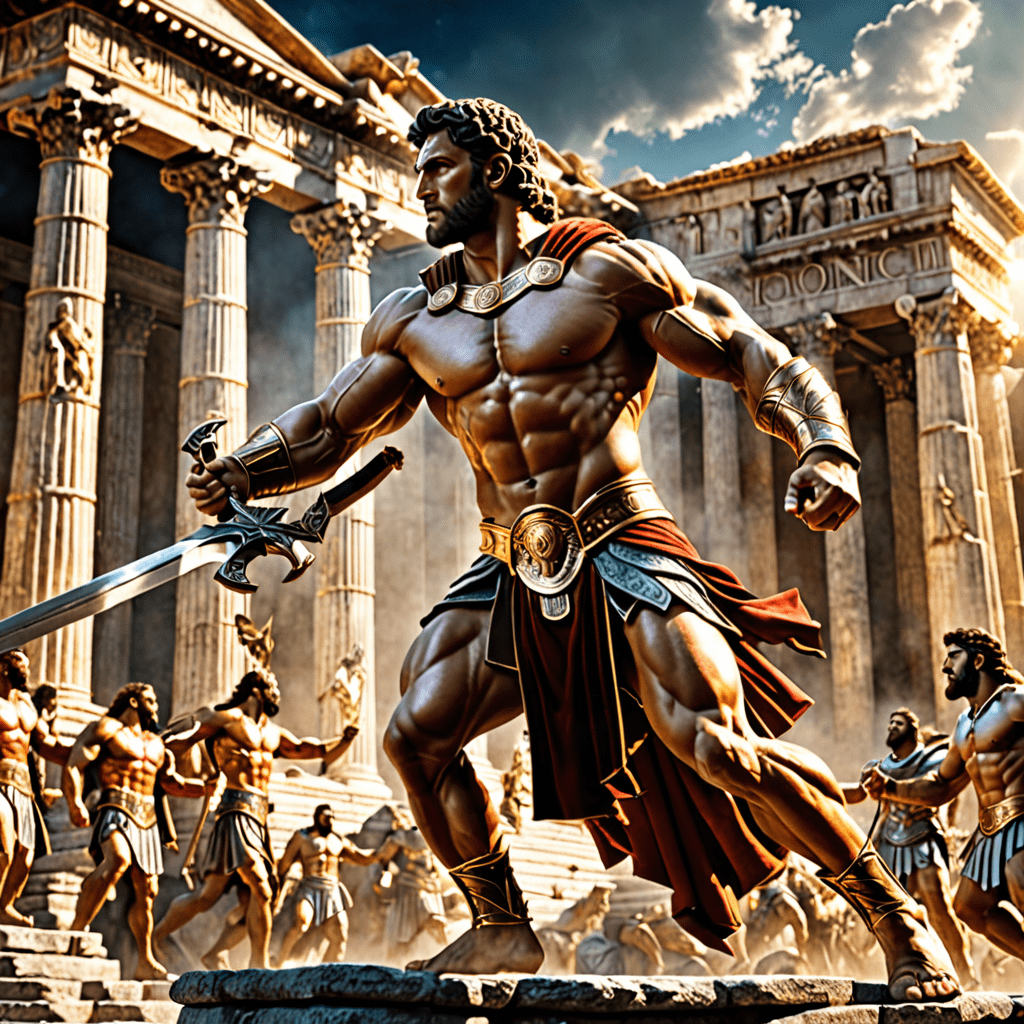Marae: Sacred Sites of Maori Culture and Spirituality
The Significance of Marae in Maori Cosmology
In the rich tapestry of Maori mythology, Marae hold a central place as sacred sites that embody the profound connection between the physical and spiritual realms. These open-air spaces, often located in prominent locations within a community, serve as powerful symbols of ancestral lineage, cultural identity, and spiritual well-being.
The Maori worldview, steeped in the concept of whakapapa (genealogy), emphasizes the interconnectedness of all things. Marae are seen as tangible links to the ancestral realm, where spirits of the ancestors reside. Through elaborate carvings, intricate designs, and carefully placed stones, Marae serve as a physical manifestation of the ancestors' presence, guiding and protecting the living.
Marae as a Tangible Link to the Ancestors
The concept of whakapapa is fundamental to understanding the significance of Marae. Every Maori individual is intricately connected to their ancestors through a lineage that stretches back through generations, linking them to the very origins of the universe. Marae serve as a visual reminder of this lineage, with their architecture and design often depicting key figures and events from the ancestral past.
The ancestral spirits, known as atua, are believed to inhabit the Marae, lending power and guidance to those who gather there. The structures within a Marae, such as the wharenui (meeting house), are not merely buildings but symbolic representations of the ancestral lineage and the interconnectedness of the spiritual and physical worlds.
The Role of Marae in Ritual and Ceremony
Marae play a central role in Maori rituals and ceremonies, serving as focal points for spiritual connection, community gatherings, and the transmission of cultural knowledge. The most significant ceremonies, such as tangihanga (funerals) and hui (gatherings), are held on Marae, allowing the community to connect with their ancestral heritage and reaffirm their collective identity.
During these ceremonies, specific rituals are performed, including karakia (prayers), waiata (songs), and haka (war dances), all of which are designed to honor the ancestors, seek their guidance, and ensure the well-being of the community. The intricate choreography and symbolic gestures of these rituals serve to reinforce the deep connection between the living and the ancestral realm, with the Marae serving as a sacred space for these interactions.
Marae and the Concept of Mana
Mana, a key concept in Maori cosmology, refers to the inherent power and prestige that resides within individuals, objects, and places. Marae are imbued with a powerful form of mana, known as tapu, which signifies their sacredness and the potential consequences of disrespect.
The tapu of a Marae is not merely a physical barrier but a spiritual one, reminding people that they are entering a space where respect and reverence are paramount. The presence of tapu on a Marae underscores its importance as a site of spiritual connection and the need for individuals to approach it with humility and awareness.
The Importance of Tapu and Noa in Marae Practices
The concepts of tapu and noa are crucial to understanding the protocols and practices associated with Marae. Tapu, meaning sacred, restricts access and behavior within a sacred space. Noa, meaning common or ordinary, represents the state of being free from tapu restrictions.
A Marae is a tapu space, requiring individuals to adhere to specific rules and rituals to ensure respect for its sacredness. These practices, often overseen by a kaumatua (elder), ensure the preservation of the Marae's spiritual power and its ability to connect the living with the ancestral realm.
Marae as a Site of Community and Identity
Beyond their spiritual significance, Marae serve as vital centers for community cohesion and cultural identity. These spaces foster a sense of belonging, providing a platform for shared experiences, rituals, and celebrations that bind individuals together. Marae gatherings not only strengthen familial ties but also reinforce the collective identity of the iwi (tribe) or hapū (sub-tribe) to which they belong.
The construction and maintenance of Marae are often collaborative efforts, with community members working together to ensure the preservation of their ancestral legacy. This shared responsibility reinforces a sense of collective ownership, pride, and commitment to the well-being of the Marae and its associated traditions. Marae gatherings, whether for ceremonies, celebrations, or simply community meetings, provide opportunities for individuals to connect with their ancestors, their communities, and their shared cultural heritage.
The Impact of Colonization on Marae
The arrival of European colonists in New Zealand had a profound impact on Maori society, including the sanctity of Marae. The imposition of European laws, values, and practices challenged traditional ways of life, leading to the disruption of Marae practices and the erosion of their cultural significance.
Many Marae were desecrated or destroyed, with land confiscated and traditional activities restricted. The introduction of Christianity, with its emphasis on a singular deity, undermined the Maori belief system and the importance of ancestral spirits. Despite these challenges, Maori communities have remained resilient, actively working to reclaim and revitalize their Marae.
Modern Interpretations of Marae Symbolism
In contemporary Maori society, Marae continue to hold profound significance, adapting to changing times while preserving their core values. The symbolism of Marae has evolved to encompass broader concepts of social justice, environmental sustainability, and the need to honor the past while striving for a brighter future.
Marae have become platforms for raising awareness about social issues, advocating for indigenous rights, and promoting the preservation of Maori language and culture. They serve as spaces for reflection and dialogue, fostering a sense of shared purpose and responsibility among Maori communities.
Marae as a Source of Cultural Resilience
The resilience of Marae in the face of colonization and modern challenges is a testament to the enduring power of Maori culture and spirituality. These sacred sites continue to serve as sources of strength and inspiration for Maori communities, reminding them of their ancestral heritage and their ability to adapt and thrive in a changing world.
Marae represent a commitment to maintaining cultural continuity, ensuring the transmission of knowledge, values, and traditions to future generations. They provide a framework for collective action, fostering a sense of purpose and shared identity that transcends individual differences.
The Future of Marae in Maori Society
Marae are not relics of the past but vibrant symbols of a living culture that continues to evolve and adapt to new realities. Their future is inextricably linked to the ongoing struggle for self-determination and the preservation of Maori language, culture, and identity.
As Maori communities navigate the complexities of a globalized world, Marae will remain central to their cultural identity, serving as spaces for gathering, reflection, and action. They will continue to embody the values of whakapapa, mana, and tapu, providing a foundation for future generations to connect with their ancestors, their communities, and their shared heritage.
FAQ
Q: What is the purpose of a Marae?
A: Marae are sacred sites that serve as a connection to ancestors, a place for community gatherings, and a place for cultural learning.
Q: Who can use a Marae?
A: Marae are traditionally owned by a specific iwi or hapū, so access is typically granted to members of that group. However, some Marae may be open to visitors with appropriate permission and respect.
Q: Can I go to a Marae as a tourist?
A: Some Marae may be open to visitors for tours or cultural experiences, but it's important to contact the local community and seek permission beforehand.
Q: What are some examples of rituals performed on a Marae?
A: Marae host a variety of rituals, including tangihanga (funerals), hui (gatherings), and powhiri (welcoming ceremonies). These rituals often involve karakia (prayers), waiata (songs), and haka (war dances).
Q: What is the significance of the carvings on a Marae?
A: The carvings on a Marae often depict stories of ancestors, key events in history, or important cultural values. They serve as a visual reminder of the history and heritage of the iwi or hapū.



